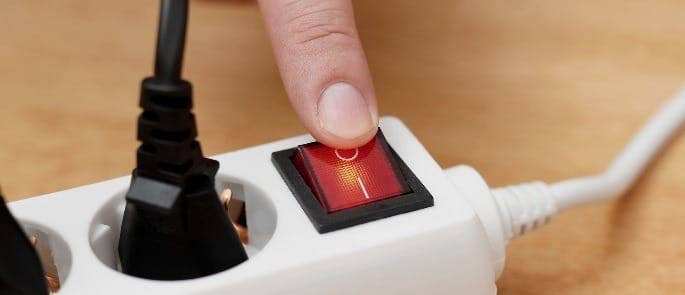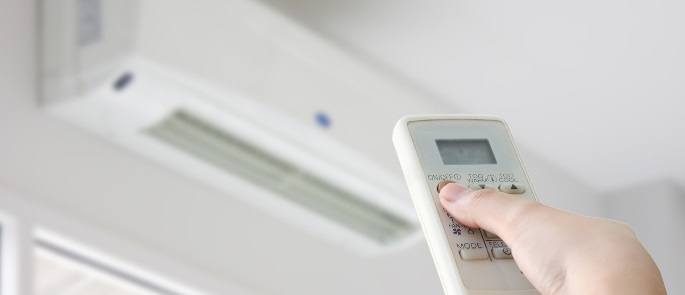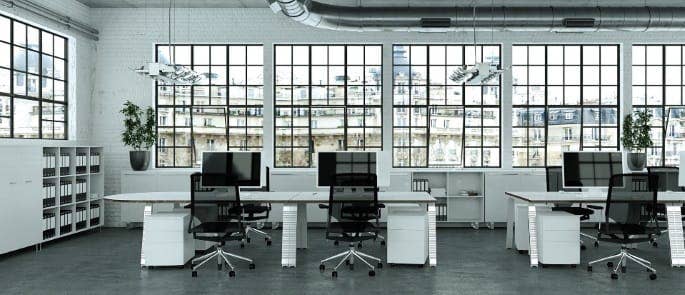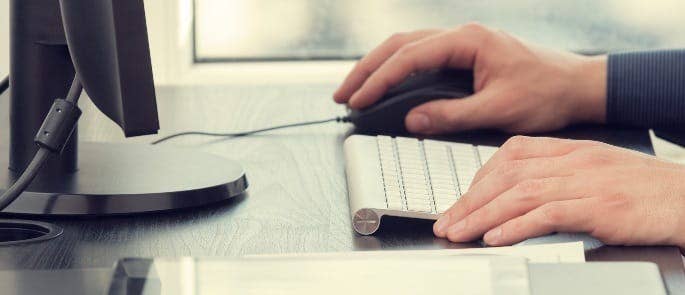How to Save Electricity in the Office: 4 Key Areas
Office workplaces should aim to save electricity in their building to help reduce C02 emissions and conserve our fuel reserves, as well as save themselves money! Consider the following, and read on for a full explanation of the following suggestions. How to save electricity in the office:
- Dress for the season and in layers to reduce air conditioning.
- Keep the thermostat between 20-23°c.
- Check the building’s airtightness.
- Use sleep/hibernation and energy-saving modes for PCs.
- Replace old, inefficient equipment with those that have a high energy rating.
- Keep lights free of dust and use LEDs.
- Don’t overfill the kettle.
- Turn things off (by the switch) when they’re not in use!

Electronic equipment has become deeply rooted in our lives, so it’s easy to forget just how much electricity we use on a daily basis. More specifically, it’s easy to forget just how much we’re wasting.
By not being conscious about turning things off and purchasing energy efficient equipment for work, we’re burning through our fuel reserves quicker than drowsy office workers burn through coffee on a Monday morning.
People don’t feel the urgency to save electricity because they don’t feel the immediate positive effects of doing so – or the negative effects of not bothering. But it’s speculated that the world’s fuel reserves are well past its peak, and if our consumption doesn’t slow then supply will continue to rapidly decrease and prices will escalate – and then we’ll be feeling it.

We need to minimise our use of energy at work for the long-term benefits. More often than not, saving electricity is so simple and cost-effective that there’s really no reason not to – save for ignorance.
According to Douglas Harris, author of A Guide to Energy Management, an estimated 50% of our energy use and CO2 emissions are from the use of heating, cooling, and lighting buildings.
These areas, and numerous others, are where we need to focus our own energy: we need to reduce our usage at work, particularly in office buildings filled with electrical equipment, which can easily be used more efficiently with minimal effort and cost. In fact, improving energy usage often saves money. It’s as simple as that.
Here are our tips for minimising electricity consumption in 4 key areas of an office environment:
1. Air conditioning
Heating and cooling buildings – while necessary – requires a large amount of energy. So if offices can find alternative, cheaper, energy-efficient methods of keeping their building warm and cool, they should use them.

Did you know that keeping the thermostat down by just 1°c could save you 10% on your yearly bill?
Examples of ways to save electricity on air conditioning:
- Dress for the season: wear lighter clothes in summer and warmer clothes in winter, and wear layers so you can dress up and down accordingly. Rooms won’t have to be heated to an excessively high temperature if people aren’t wearing t-shirts in the middle of winter.
- Keep doors and windows closed when heating a room so heat doesn’t escape, but open doors and windows when it is warm to minimise air conditioning and prevent the room from getting stuffy.
- Keep the thermostat between 20-23°c – this is the most comfortable room temperature.
- Use an energy management system so you can set timers for air conditioning: program them to turn on and off ahead of time before people get in/leave the building.
- Check the building for air-tightness – draughts might be leading to a loss of heat.
- Install weather strips on doors and around windows – this will prevent air from escaping while the air conditioning is on and so keep the room at a stable temperature.
2. Lighting
It’s estimated that around 15% of a business’ yearly energy bill is spent on lighting, and about half of offices in the UK leave their lights on overnight and at weekends!
Can you imagine how frustrated you’d feel if you went away for the weekend and came back to discover you’d accidentally left all the lights on in your house, and your energy bill ended up costing way more than usual? Well, offices across the country are doing this every day! So much electricity and money is being unnecessarily wasted.

Saving energy on lighting is easy. Light bulbs available on the market are more efficient than ever before and there exists technology for setting lights to automatically switch off under certain conditions in case people forget. Plus, businesses should utilise natural light as much as possible: it’s a free resource!
Examples of ways to save electricity on lighting:
- Turn off lights when you leave a room! This is so obvious but you’d be surprised by how often people just forget or don’t bother.
- Use LED bulbs – they last up to 2.5x longer than CFL and 25x longer than incandescent bulbs.
- Set lights to turn off automatically at the end of the working day (with manual override for people who need to work overtime).
- Keep light fixtures clean and free of dust – a heavy coat of dust can block up to half of the light.
- Use natural daylight as much as possible, i.e. arrange desks so they are near windows and the use of artificial lighting is reduced.
Need a Training Course?
Working more sustainably is the responsibility of every workplace. If you want to continue learning about how your business can improve, check out our Environmental Awareness training course.
3. Office equipment
Tons of electricity may be wasted on equipment that is simply not energy efficient or is not being used in a conserving way.

Dozens – possibly hundreds – of people across your building use PCs, display screens, printers, phones, and more, so if this equipment is left on or used when it’s not necessary, especially without the use of energy-saving features, then that’s just burning up electricity.
Examples of ways to save electricity on office equipment:
- Set computers to go into sleep/hibernation mode when not in use short-term, but shut it down fully when you are done using it for the day.
- Set equipment to energy-saving modes – most modern PCs and monitors have these settings.
- Don’t print something unless you absolutely need it in hard copy – refer to a digital version instead or, if someone needs a copy, email it or share it via Google docs.
- Ensure that equipment purchased for the office has a high energy rating – replace older types of office equipment, as they can use between 50 and 90% more electricity than energy-efficient models.
4. Kitchens
No matter whether the kitchen in your office workplace is small or large, electricity will be used to power equipment that’s used a lot throughout the day, such as kettles and coffee makers – as well as the sink – and can easily be wasted through poor practices.

Examples of ways to save electricity on kitchen equipment:
- Don’t leave taps dripping or leave them running for longer than is necessary. Report dripping faucets so they can be promptly repaired.
- Make sure there is at least a 10cm gap behind the fridge, as this lets heat flow away easier and saves electricity.
- Switch appliances off at the plug when they’re not in use – they won’t drain a huge amount of electricity when left plugged in, but it all adds up.
- Don’t overfill the kettle as it will have to use an unnecessary amount of energy to boil the water (it is thought that most people use double the amount of water they really need). Be sure to descale your kettles on a regular basis.
Many of these adjustments to the way you use electronic equipment in your office seem obvious, but they need to be reiterated, especially for our new generation.
They might not think twice about where electricity comes from and therefore don’t think twice about how they use it. A lot of people simply aren’t aware of how much electricity gets wasted when they bypass the simple act of switching off a light or equipment that’s not in use.
Make an effort to adopt these good practices in your office workplace. You’ll contribute to our nation’s endeavour to save electricity, cut down on CO2 emissions, and help fuel reserves last.
Further Resources:
- Environmental Awareness Quiz
- Making Environmental Awareness a Priority in Your Workplace
- Environmental Awareness Training







